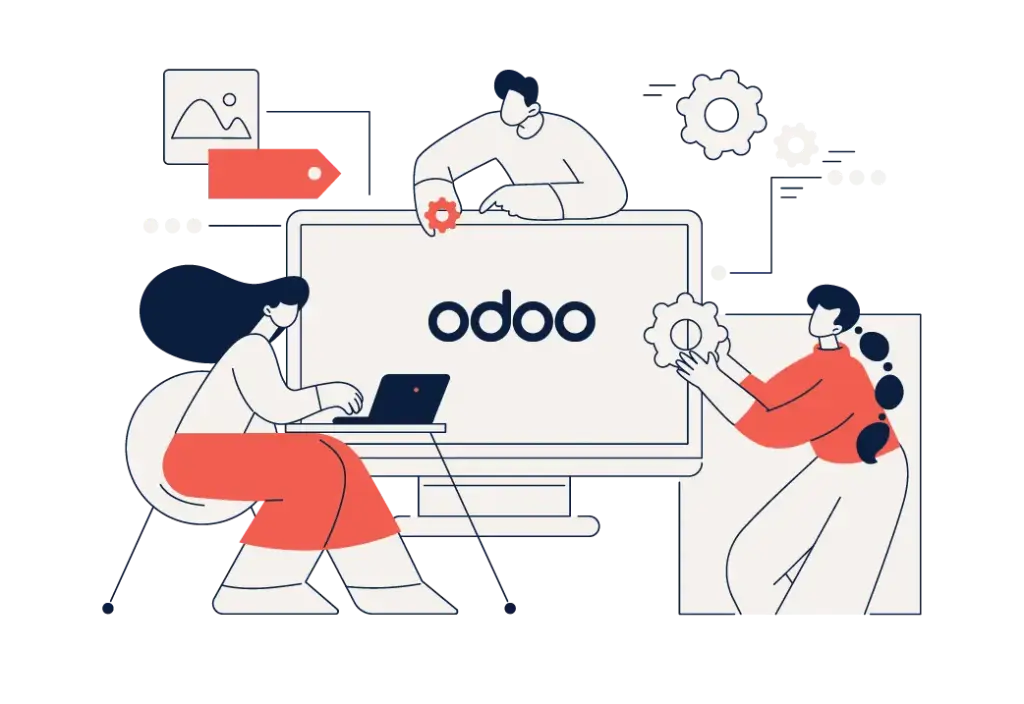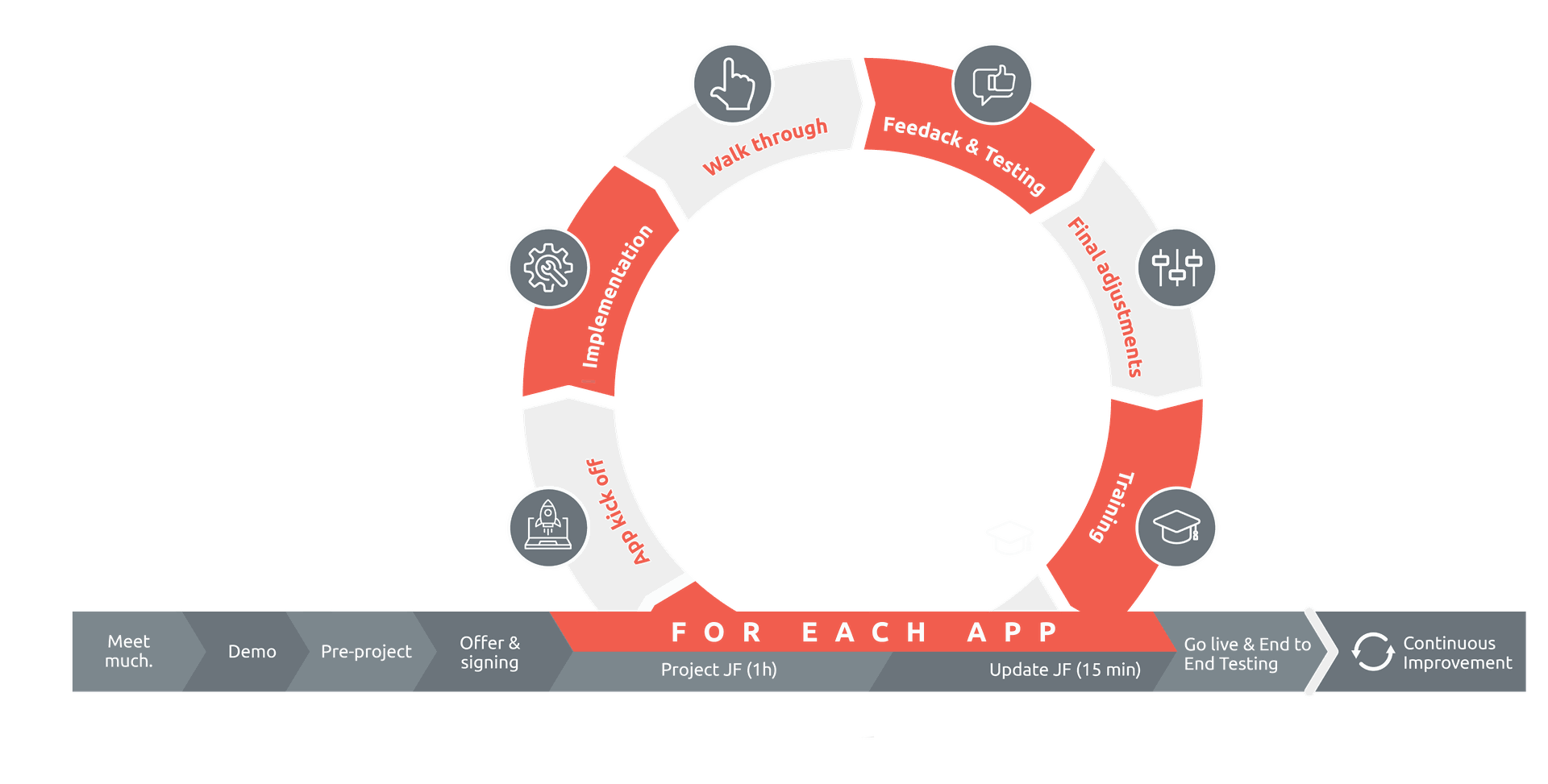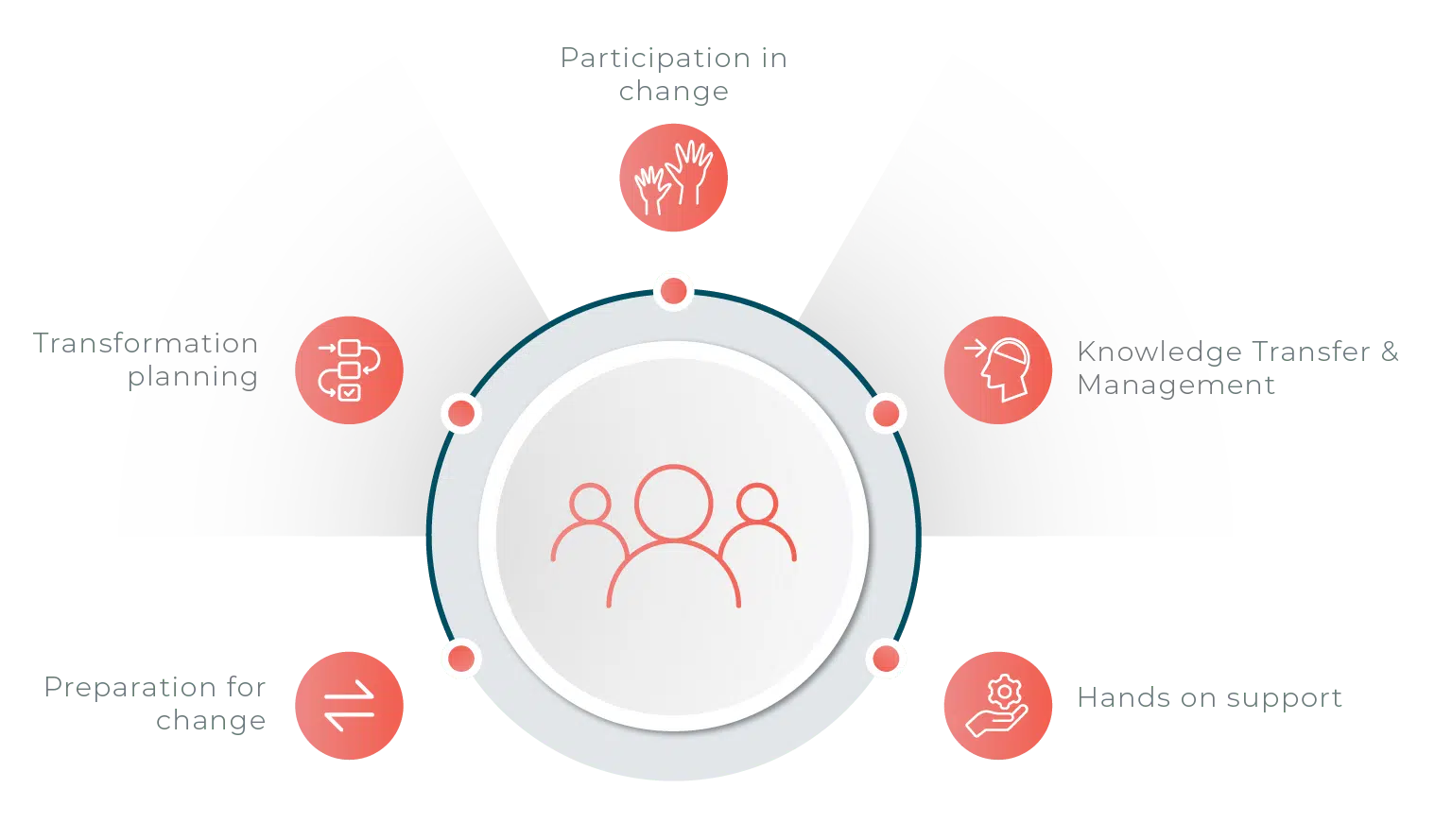Project & Change Management
An ERP project only works when the system and the people are ready at the same time.
Good project management keeps the goals, timeline, and budget on track. But without change management, even the best system can struggle to land.
We approach both together — so the structure holds and the team grows into it naturally.
What do we mean with project management?
Whenever we consult or do projects with our customers, our goal is to be as fast and efficient as possible. To achieve this, we need a superb framework that not only provides both the customer and us with a transparent state of the project but also enables both of us to work together with maximum efficiency.
We are convinced that the key drivers for successful projects are the three constraints: budget, time and fulfilling all requirements to reach the project’s goal – running ERP system. From our point of view the key task of a project manager is to balance within them and to keep things moving toward a successful completion without compromising quality of the project outcome.
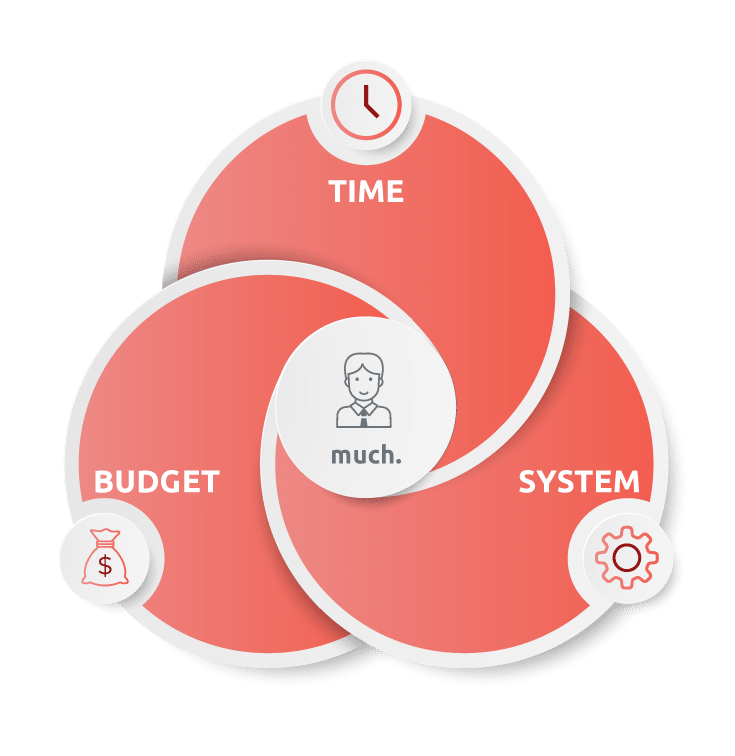
Our three key principles in project management:
1. Transparency
We provide a high level of transparency and visibility. We are convinced that this helps running the project more effectively. We achieve the principle of full transparency via our customer portal. It makes all processes connected to the project accessible to you:
- Task overview and their status
- Spent time
- Budget status
- Change requests
2. Predictability
Thanks to our transparent process, our managers are able to anticipate changes to the scope early, to discuss them with you. Predictability enables project teams to address project performance proactively and in a timely manner, through proper management decisions, and thus increase value to your organization e.g. to prioritise and remove unnecessary tasks, to manage expenses for the project and plan personnel resources.
3. Communication
The flow of information and communication plays an important role in the success of a project. There are three kinds of recurring standard meetings: weekly project jour fixes, update jour fixes and monthly billing jour fixes which are anchored in our process workflow. Our consultants are open for any question regarding your project and always engaged with your problems.
Our project cycle
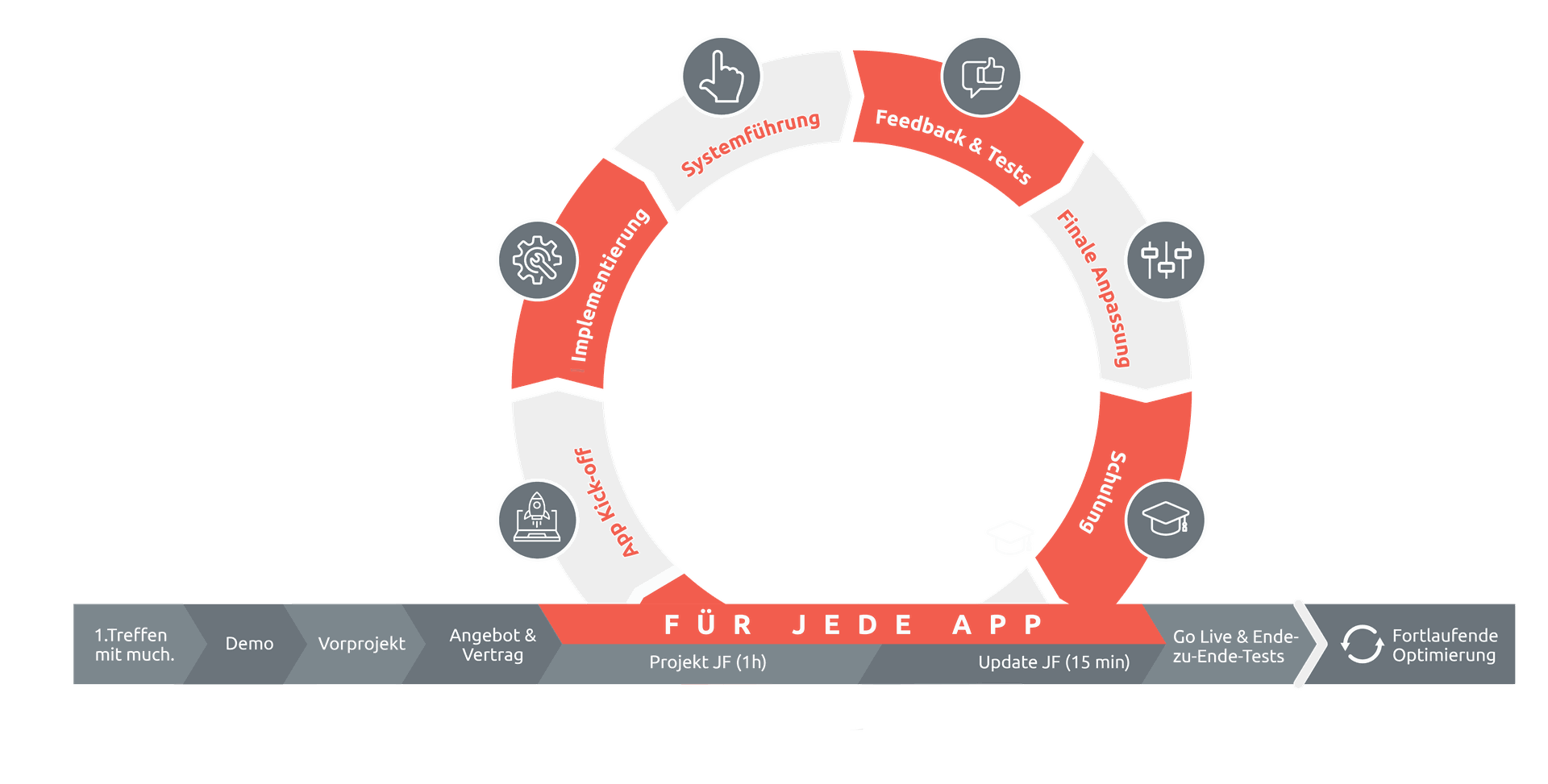
Phase 1: Meet much.
After our first contact, we want to take the opportunity to meet you and your specific needs and problems. On this first touch point with the customer’s team we get to know each other, and see if we are a good match.
Phase 2: Demo
We use the information from questionnaires, publicly available client information, and our industry knowledge to tailor your demo. The delivering an on point demo enables you to see us in action and showcases the functionality of the system. After the demo session customers have the possibility to take a look at the system and to try it out by yourself.
Phase 3: Offer & signing
After the demo and further questions, we prepare your quote with a detailed description of all the services and costs. This gives you a first indication of the price tag. We also make all 3rd party costs available, so you can calculate the total cost of ownership.
Phase 4: Kick off
A kick off meeting is equally important for you and for us because it is a first step of many to a successful project launch. The purposes of kick off meeting are:
- Introduce the team which will work on a project, their roles and responsibilities
- Onboard customer in much.
- Review strategy, goal and project process
- Establish communication methods while the project and remove potential barriers to success
- Finalizing the project plan and timeline
- At the end of the kick off meeting there is enough time for a Q&A session relating to the project!
Phase 5: Project Management
5.1 Initial set up
Before we can start with our kick off workshops, a few general set-up tasks have to be done. This includes setting up your ERP instance and corresponding development & staging instances, domains, mail servers and creating user accounts for the key stakeholders. Depending on the required modules, additional setup e.g. setting up a chart of accounts, is done here as well.
5.2 Module-Kick-off
For each module we set up a kick off meeting. We introduce all direct stakeholders to their future daily workflow within the system. Furthermore, we introduce the project workflow, needed integrations and gather additional requirements. Afterwards the project plan and timeline for the module/modules should be finalized.
5.3 Implementation
During the implementation our consultants translate customers requirements into the right configurations in your new ERP. Implementation also covers the other aspects such as customization, developing user training and importing data, and integrations with other systems such as Shopify, Salesforce and custom systems.
5.4 Walk-Through
After a successful implementation we set up a walk through meeting. Purpose of this meeting is showing the customer the running system and all required processes in your ERP. If the system’s functionality aligns with the set up requirements for the project or current module, customers start to test the system.
5.5 Feedback and testing
First, we define the scope of testing with testing manuals/scripts. All ERP modules and features are tested separately and together, all data integrations must be also tested to ensure that the system interacts with other systems as expected. Customers have the opportunity to report bugs and ask questions via our project management portal and will receive a quick answer.
5.6 Final Adjustments
After the customer feedback we finalize the configuration. Once all requirements of previous phases have been completed, the project team and stakeholder start the final tests.
Phase 6: End-to-End-Testing
The end-to-end testing phase begins when all modules are ready and final adjustments are made. The key stakeholders test the system in its full configuration before it goes live. This is usually the first time where all integrations are working at the same time and users are able to see how their processes will work in a productive system.
During this phase we also start working on customized project documentation and long term training materials based on customers needs and wishes. This is the final step before diving into the live system.
Phase 7: Go live
While going live, we provide on site support so questions and issues can be handled immediately. Now project team members are comfortable doing their jobs in the new system. The go live is the culmination of all the work up until this point.
Phase 8. Continuous improvement
Once the ERP system has gone live, the purpose of the project team will shift. Over time, as the way the users work within the system evolves, adjustments and changes to the system configuration may be needed. After the go live phase we attach great importance to having a meeting where we come up with a Lessons Learned knowledge database and useful project information as they move into the post-implementation support mode. We regularly check how well the implemented ERP solution still meets your unique requirements and we work together on continuous improvement of ERP systems (additional requirements if they are needed, system performance, version update etc.)
What do we mean with Change Management?
Implementing a new ERP system involves many changes within your organization. These changes involve structures, processes and employees. To improve the adoption of changes, we guide you by deploying change management methods to make the process of implementation and adoption as quickly and frictionless as possible.
On the human side, we differentiate between project management and change management.
While project management is needed to manage deadlines and requirements, change management is essential when it comes to soft factors. They include people-driven factors such as motivation or personal values as well as organizational influences, e.g. communication ethics, work methods or management styles.
As soon as the desired technical solution triggers or requires a change in behavior of stakeholders or users, typical project management approaches will not be sufficient to drive adoption but need to be supplemented by corresponding change management. In general, increasing complexity of tasks will result in higher importance of soft factors for the project to be successful.
The amount of change management needed by a project depends on the individual starting point, the size of the company, requirements and the associated effects on the employees.
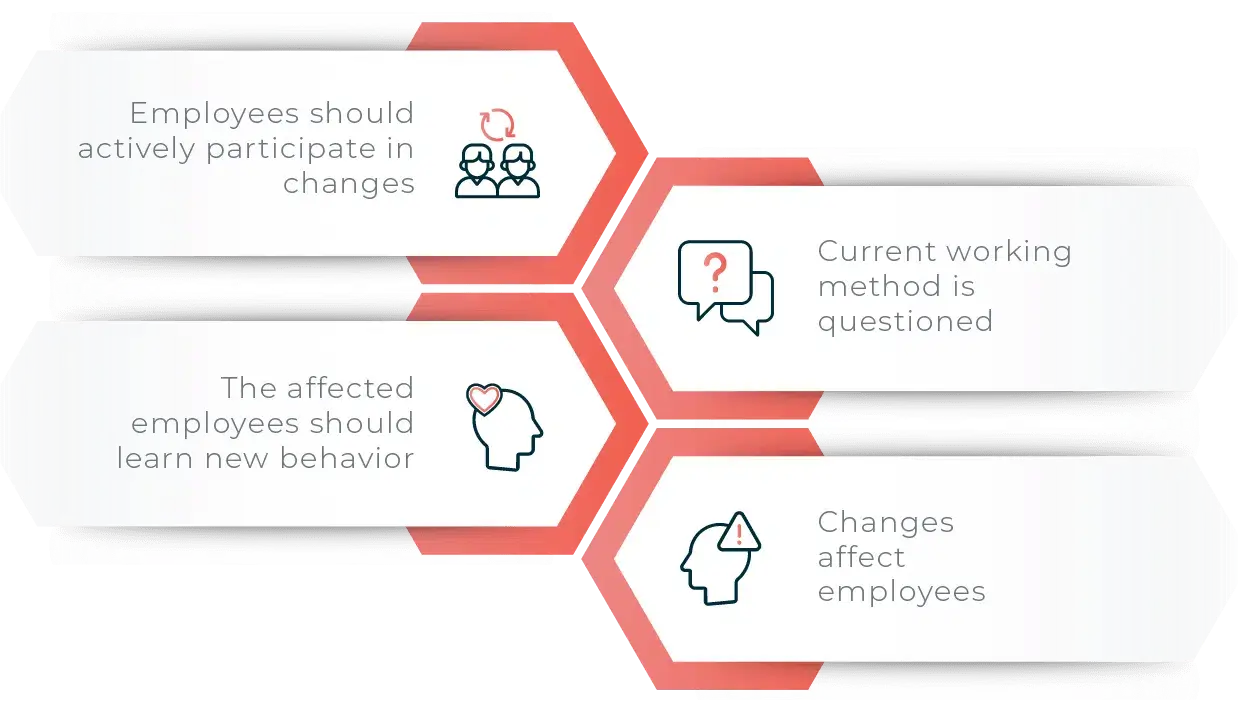
Customers need Change Management in the following situations:
Eliminate inefficiencies
Processes and systems within the organization are redundant, not efficient and not state of the art anymore
Manage the change
Planned changes have an impact on how employees are behaving and doing their everyday work: job roles, workflows and processes etc.
Qualify employees
Employees should learn how to use a new system to deliver expected results and outcomes.
Communicate changes
Anticipated changes affect the whole organization and employees should be involved.
much. key principles in Change Management
Changes are always difficult but without them, businesses would lose their competitive advantage and fail to meet the constantly changing customer needs. Ignoring the employees’ side while implementing the new ERP system by focusing only on technical requirements increases the risk of additional process costs and disengaging of your employees in the result. Instead, we proactively support and guide your employees and stakeholders through the changes letting them embrace the changes as a chance.
Our change management approach provides your employees with the preparation, support, skills and knowledge they need to succeed in change.
Phases in change management process
As change management supports the introduction and adoption of your new ERP system, our service offering accompanies the project and the desired emotional state of your employees.
In different phases the performance and participation of your employees differs and thus, different activities throughout the project phases are necessary to keep all hands on deck. In the end, we want to flatten the performance rollercoaster to keep emotional and also workload strain as far away from your organization as possible.
Based on our experience we have adopted the Kubler-Ross Change Curve to our process during the implementation of the new ERP System.
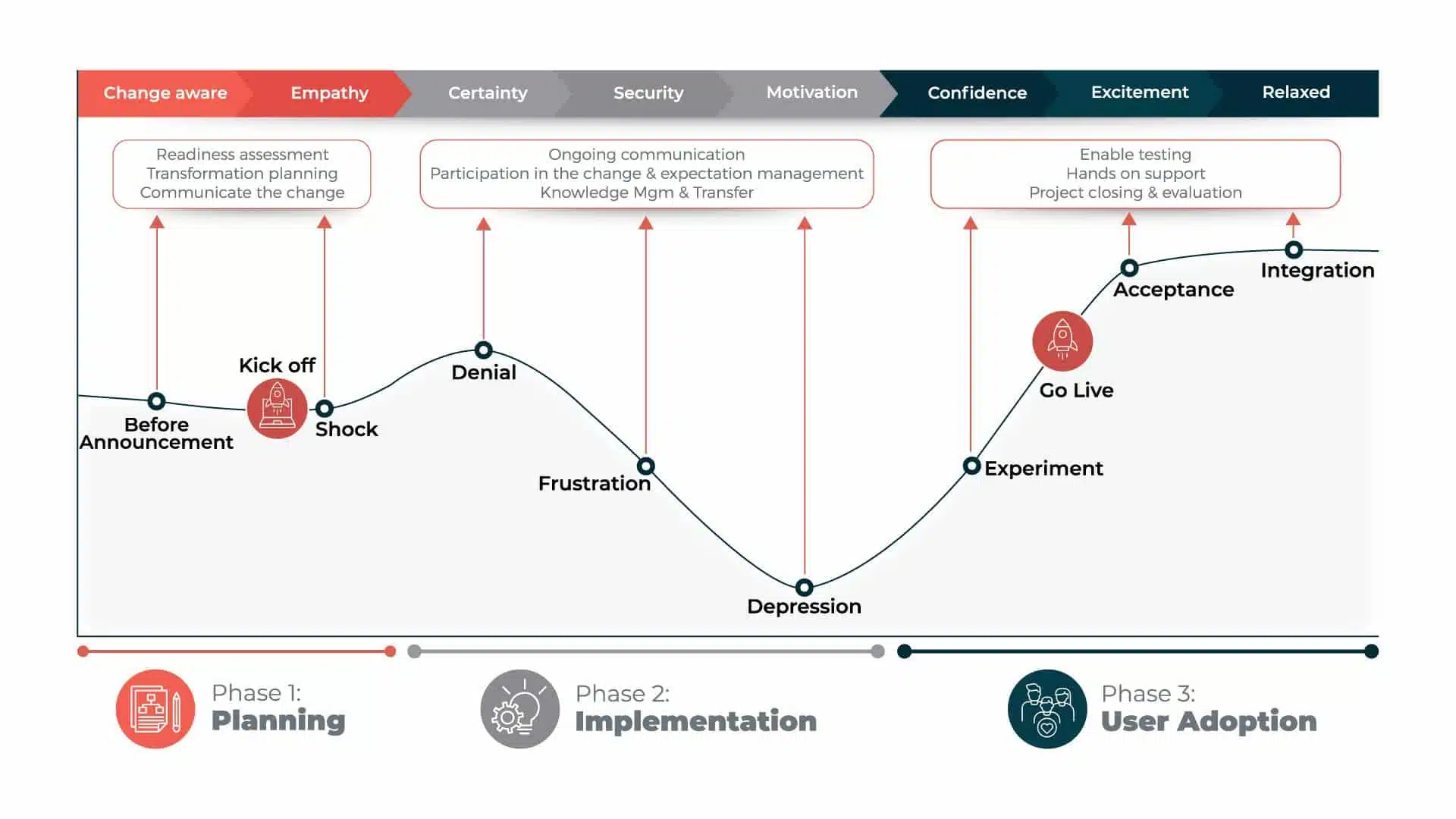
This allows us to support your organization and your employees individually depending on their position on the curve. Not all organizations will move through all the stages, some can move forward quickly and some might get stuck at points along the curve. Our model helps us to understand and deal effectively with your changes and personal transitions in order to provide proper support during the process of change. Knowing where an employee, manager or group of impacted users are on the change curve will help us in developing and implementing effective change management plans to communicate, engage with, and support these individuals through the transition process.
„With our services we want to flatten the curve“
- Simon Stappen, Managing Partner
How we will lead your team through the change
Phase 1: Planning Phase
Before the project starts, the needed change management components have to be defined and the communication of the change has to be prepared sufficiently.
1.1 Pre-announcement
Before the announcement of the project, we analyze the need for change management with our readiness assessment checklist. This checklist provides an overview over defined needs and readiness for change within the company to our consultants and gives us a base for planning time, resources and personnel. In this phase it is most important to gather expectations and concerns from affected functional areas and identify critical success factors. After the detailed analysis of information received from the readiness assessment, ERP requirements and additional sources, our consultants prepare the detailed transformation strategy.
1.2 Kick Off: Communicate the Change
During the all hands project kick off we give your team a detailed process overview and a room for open questions. For us it is important to explain the process, make the timeline available and show everyone how they are affected by the new ERP System. Additionally, we provide an opportunity to interact with the system from the beginning. In our experience, this helps to reduce the fear of the system’s complexity, minimizes the feeling of negative impact of the change and helps your team to adapt to it more quickly. In the end of this phase, every potential user should understand when he is involved and what changes for him personally may occur to limit his feeling of shock and avoid denial.
Phase 2: Implementation
2.1 Ongoing communication
During the implementation phase, our change management consultants are in constant contact with all of the project’s stakeholders. In addition to having multiple workshops and walkthroughs per department. Furthermore, we conduct a weekly 15 minute update and questions meeting for all stakeholders to ensure ongoing communication. A more elaborate exchange with your project leaders takes place in the 1 hour weekly project jour fix. These meetings allow ongoing communication of all stakeholders into the implementation process early on.
2.2 Participation
At this stage of the project customers start to understand that changes are going to happen and there is nothing they can do about it. They are frustrated because of lack of knowledge and control of the current situation. That is why we are enabling the stakeholders to explore the system from an early phase and test their requirements on their own. That significantly improves the involvement in the project and helps for smoother end-to-end testing and go-live phases. Through our unique portal, stakeholders are able to see the current state of the project and all subtasks associated with it. We offer everyone involved in the project the opportunity to ask questions directly on the tasks and give their feedback to our customizations.
2.3 Knowledge transfer and -management
To further increase knowledge transfer to users into the implementation and to enable proper testing, we are providing our customers with an extensive knowledge base, containing videos, FAQs & articles for all organizational units. This helps immensely in onboarding the users and enabling them to understand how the system will support them in their daily work.
Phase 3: User Adoption
From our point of view that is a turning point for the organizations and their employees because while testing the acceptance of the new ERP system is growing. Our goal at this phase is to enable the testing process and to provide customers needed manuals and room for feedback and questions.
3.1 Hands-on Support
After detailed testing and Go Live employees start to properly understand the value of the changes and the curve rises vertically into acceptance. As a result, they actively engage in the process and ask questions regarding the system that indicates genuine changes in their behavior. Our consultants are there for all the questions and needed support.
3.2 Project closing and evaluation
An in-depth retrospective of the project is the basis for future collaboration, e.g. implementation of another module or further maintenance. Important in this phase is to give the team the opportunity to evaluate the project’s performance and to ensure that all stakeholders have needed information, resources and training to successfully use the new ERP system. A change management perspective is essential to make sure that all potential users are on board and ready (“Mentally”) to start working with a new ERP system.
3.3 Integration
The final stage is a change in mindset to trying to adjust to the new way and look for the positives in it. The lessons are learned and implemented. Employees are still learning to work in the new system but they have already noticed how much time they spent and how efficient they become with a new ERP system. At this phase we follow-up with employees and provide them additional coaching if needed. The journey from choosing the right ERP system until its implementation to the final phase can be difficult and we are convinced that the much. approach in change management, professionality and the mindset of our team at much. will help you to overcome any obstacles.
Overall the much. approach for Change Management includes:
Preparation
Preparing the organization or involved departments for change
Planning
Planning the change process holistically: from gathering necessary information via readiness assessment to providing a detailed plan for the whole process
Focus
Working on business as well as emotional levels with employees who are affected by a change in a targeted, controlled and active manner
Support
Supporting employees who are affected by the implementation process by providing consultation, easy to access knowledge databases and customized training
News & current topics

